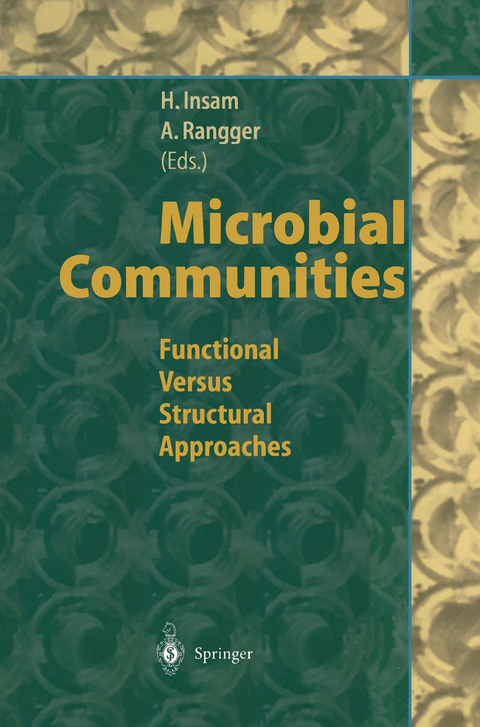
Microbial Communities
Springer Berlin (Verlag)
978-3-642-64511-2 (ISBN)
Relationship between Functional Diversity and Genetic Diversity in Complex Microbial Communities.- Use of Molecular Probing to Assess Microbial Activities in Natural Ecosystems.- Phenetic and Genetic Analyses of Bacterial Populations in Fermented Food and Environmental Samples.- Comparison of Biolog and Phospholipid Fatty Acid Patterns to Detect Changes in Microbial Community.- Combined Application of Biolog and MIS/SHERLOCK for Identifying Bacterial Isolates from Hydrocarbon-polluted Argentinian Soils.- Diversity of Anthropogenically Influenced or Disturbed Soil Microbial Communities.- Impact of Fertilizers on the Humus Layer Microbial Community of Scots Pine Stands Growing Along a Gradient of Heavy Metal Pollution.- Disturbances and their Influence on Substrate Utilization Patterns in Soil Microbial Communities.- Evaluation of Remediation by Community-Level Physiological Profiles.- Carbon Source Utilization by Microbial Communities in Soils under Organic and Conventional Farming Practice.- Characterization of Microbial Communities in Agroecosystems.- Different Carbon Source Utilization Profiles of Four Tropical Soils from Ethiopia.- Fallow Age Influences Microbial Functional Abilities, Soil Properties and Plant Functional Groups.- Substrate Utilization Patterns of Extractable and Non-Extractable Bacterial Fractions in Neutral and Acidic Beech Forest Soils.- Biolog Metabolic Fingerprints for Clustering Marine Oligotrophic Bacteria from Polar Regions.- The Influence of Microbial Community Structure and Function on Community-Level Physiological Profiles.- Strain and Function Stability in Gnotobiotic Reactors.- Biolog Substrate Utilisation Assay for Metabolic Fingerprints of Soil Bacteria: Incubation Effects.- A Novel Approach for Assessing the Pattern of Catabolic Potential of Soil Microbial Communities.- Chirality is a Factor in Substrate Utilization Assays.- Analysis of the Bacterial Community according to Colony Development on Solid Medium.- The Complexity of the Flux of Natural Substrates in Soils: A Freeze-thaw can Increase the Formation of Ischemic or Anaerobic Microsites.- Carbon Transformations During Substrate Utilization by the Microbial Community in an Organic Soil: A Solid-State NMR Study.- Ammonification of Amino Acids in Field, Grassland and Forest soils.- A New Set of Substrates Proposed for Community Characterization in Environmental Samples.
| Erscheint lt. Verlag | 22.9.2011 |
|---|---|
| Zusatzinfo | IX, 263 p. |
| Verlagsort | Berlin |
| Sprache | englisch |
| Maße | 155 x 235 mm |
| Gewicht | 422 g |
| Themenwelt | Naturwissenschaften ► Biologie ► Mikrobiologie / Immunologie |
| Schlagworte | agroecosystems • ecology, microbial • ecology molecular • ecosystem • Environment • Humus • Miicrobial community • Mikrobielle Gemeinschaften • Ökologie,, mikrobielle • Ökologie, molekulare • substrate utilization • Substratnutzungstests |
| ISBN-10 | 3-642-64511-9 / 3642645119 |
| ISBN-13 | 978-3-642-64511-2 / 9783642645112 |
| Zustand | Neuware |
| Haben Sie eine Frage zum Produkt? |
aus dem Bereich


